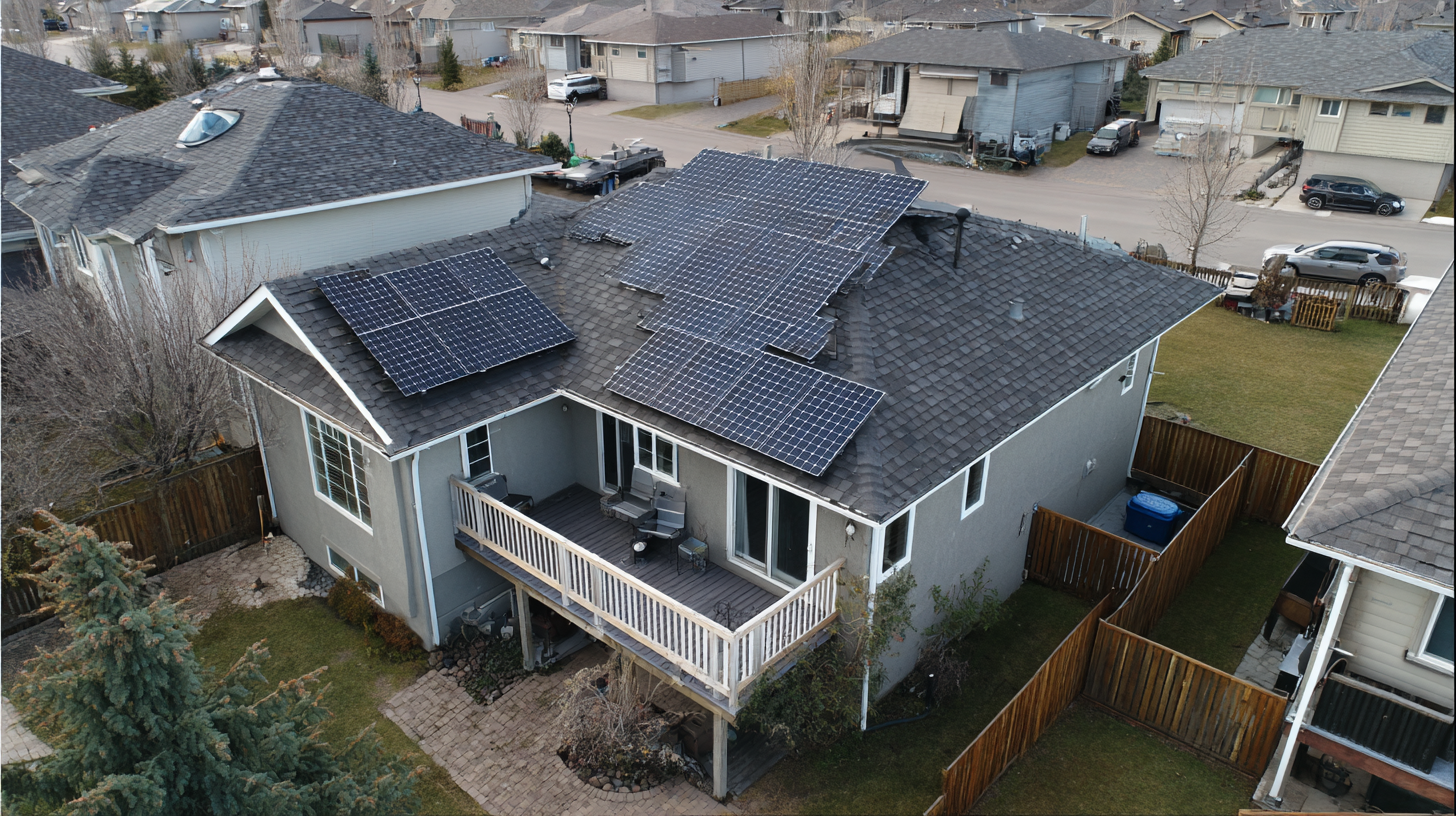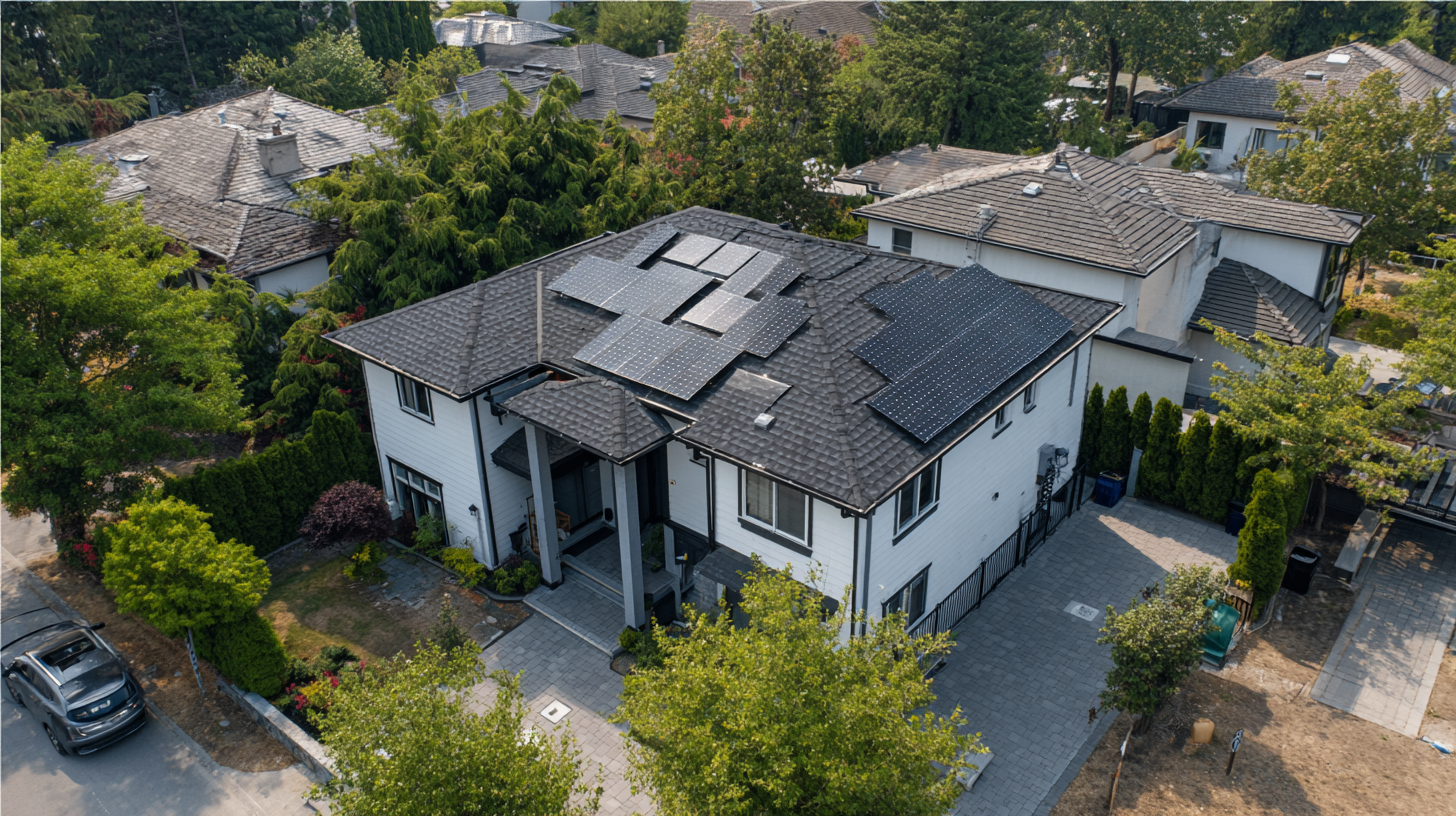The rising demand for clean and renewable energy has propelled the growth of residential solar systems, marking a significant shift in the global energy landscape. According to the International Energy Agency (IEA), solar energy is set to become the world’s largest source of electricity by 2025, making innovative designs in residential solar systems more crucial than ever. In the United States alone, the residential solar market has expanded by over 20% annually, with projections indicating that solar power could supply up to 40% of residential electricity by 2030. This shift not only highlights the urgency for more sustainable solutions but also showcases the potential of advanced technologies in enhancing the efficiency and affordability of residential solar systems. As global buyers increasingly seek out eco-friendly alternatives, the future of residential solar systems promises significant advancements, making them a viable option for homes across various climates and regions.

Understanding the basics of residential solar systems is crucial for global buyers navigating the expanding market. Residential solar systems typically consist of photovoltaic (PV) panels, inverters, and mounting systems, allowing households to convert sunlight into electricity. According to the International Energy Agency (IEA), the installation of solar photovoltaics has witnessed a staggering growth of over 20% annually, with expectations to reach 1,000 GW of capacity by 2024. This surge indicates a significant shift in energy consumption patterns, reflecting a growing demand for sustainable energy solutions.
Furthermore, the choice of system design can greatly impact energy efficiency and cost-effectiveness. Research from the Solar Energy Industries Association (SEIA) highlights that in the U.S., residential solar system prices have decreased by 70% since 2010, making solar installations increasingly accessible. Global buyers should consider innovative designs such as integrated solar roof tiles and energy storage systems that not only maximize energy production but also enhance the aesthetic appeal of a home. As more consumers become aware of the long-term financial benefits and environmental impacts, a deeper understanding of residential solar systems will be pivotal in making informed purchasing decisions.
This chart illustrates the average installation costs and energy savings of various residential solar systems across different regions. The data reflects the growing trend of solar energy adoption globally, showcasing the cost-effectiveness and efficiency of modern solar technologies.
When it comes to choosing the best residential solar systems, understanding the innovative features in solar panel designs is crucial for global buyers. One of the most significant trends is the integration of smart technology, which allows homeowners to monitor energy production and consumption in real-time. This connectivity not only enhances efficiency but also provides insights into how to optimize solar energy usage, making it essential for modern households.

Another impressive feature gaining traction is the aesthetic integration of solar panels. Many manufacturers are now offering sleek, low-profile panels that blend seamlessly with the roof, appealing to those who value the visual aspects of their homes. This not only contributes to the overall look of the property but also maintains its curb appeal while providing sustainable energy solutions.
Tips for buyers include researching manufacturers that prioritize durability and warranty options, as these are indicators of product quality. Additionally, consider solar panels with higher efficiency ratings, which can generate more energy in less space. Always check for innovative features such as integrated battery storage systems, which allow for energy independence and added resilience during power outages.
The global residential solar market has been thriving, with numerous providers offering innovative solutions to meet the diverse needs of homeowners. According to the International Energy Agency (IEA), the global solar capacity for residential installations reached an impressive 100 gigawatts in 2022, reflecting a year-on-year growth of 25%. This robust growth indicates a significant shift towards renewable energy, as homeowners seek both energy independence and cost savings.
When comparing leading providers, efficiency and technological advancements are crucial factors. For instance, based on a recent report by Bloomberg New Energy Finance, SunPower leads the market with its high-efficiency solar panels that offer up to 22.8% conversion efficiency. Meanwhile, Tesla’s Solar Roof has gained traction among buyers looking for aesthetics combined with functionality, despite its higher initial investment. Furthermore, companies like LG and Canadian Solar also stand out for their competitive warranties and performance, making them attractive options for consumers in various regions.
As the demand for residential solar systems increases, consumers are prioritizing long-term sustainability and financial returns. A study by Wood Mackenzie revealed that homeowners could save an average of $20,000 over 20 years with solar installations. This data emphasizes the importance of choosing reliable providers and cutting-edge technology to ensure that buyers maximize their investment in solar energy.
The trend towards eco-friendly materials in solar technology is at the forefront of sustainable design, catering to a global market increasingly concerned about environmental impact. As emerging advancements in construction materials are rigorously assessed, innovations such as recycled metals and bio-based composites are being integrated into solar systems. These materials not only enhance performance but also significantly reduce carbon footprints, making them ideal choices for modern residential solar installations.
Moreover, younger generations, particularly Gen Z, are driving demand for sustainability in purchasing decisions. Their tech-savviness and connectivity push manufacturers and developers to highlight eco-friendly attributes in their offerings. Initiatives like local educational programs and community recycling efforts are becoming integral to business models, showcasing a commitment to sustainable practices. This evolution reflects a growing recognition of renewable energy’s potential, with materials development playing a key role in shaping a greener future for residential solar systems worldwide.
| Solar System Type | Material Used | Efficiency (%) | Warranty (Years) | Sustainability Ratings |
|---|---|---|---|---|
| Monocrystalline Solar Panels | Silicon | 20-22 | 25 | A+ |
| Polycrystalline Solar Panels | Silicon | 15-18 | 25 | A |
| Thin-Film Solar Panels | Cadmium Telluride | 10-12 | 20 | B |
| Bifacial Solar Panels | Silicon | 20-25 | 30 | A++ |
| Building-Integrated Photovoltaics (BIPV) | Glass/Polymer | 15-18 | 25 | A+ |
As the demand for residential solar solutions grows globally, understanding the
cost analysis associated with these technologies is essential for potential buyers. A recent
Rewiring America analysis highlights significant savings available through various
solar tax credits, notably the Energy Efficient Home Improvement Tax Credit (25C)
and the Residential Clean Energy Tax Credit (25D). Homeowners may find themselves
in a position where these credits can eliminate upfront installation costs, making the transition to solar
increasingly attractive.
Moreover, projections indicate that the average residential solar system, typically around 11 kilowatts (kW)
to meet household electricity needs, will see declining costs in the coming years.
Experts suggest that by 2025, the average cost of solar panels will be lower than current estimates, enhancing
the financial viability of solar investments. With long-term savings on electricity bills
and potential increases in property value, investing in residential solar systems becomes not just an environmentally friendly
choice, but also a financially sound strategy for homeowners seeking sustainable solutions in the evolving energy landscape.

As electricity costs continue rising, many small households in Maharashtra seek sustainabl...Read More
Uttar Pradesh is making significant progress in adopting renewable energy, particularly so...Read More
With the Indian government actively promoting renewable energy through subsidies and polic...Read More
Tired of watching your electricity bills climb month after month and strain your pockets? ...Read More
Switching to solar energy in Gujarat has never been more profitable! With plenty of sunlig...Read More
If you live in Madhya Pradesh and want to save money on power while living a greener lifes...Read More
If you’re a resident of Bangalore looking to save on your skyrocketing electricity b...Read More
If you live in Karnataka and have been looking for an environmentally friendly, cost-effec...Read More
Delhi is a city that thrives on its vibrant energy, and what better way to complement that...Read More
As electricity costs continue rising, many small households in Maharashtra seek ...Read More
Uttar Pradesh is making significant progress in adopting renewable energy, parti...Read More
With the Indian government actively promoting renewable energy through subsidies...Read More